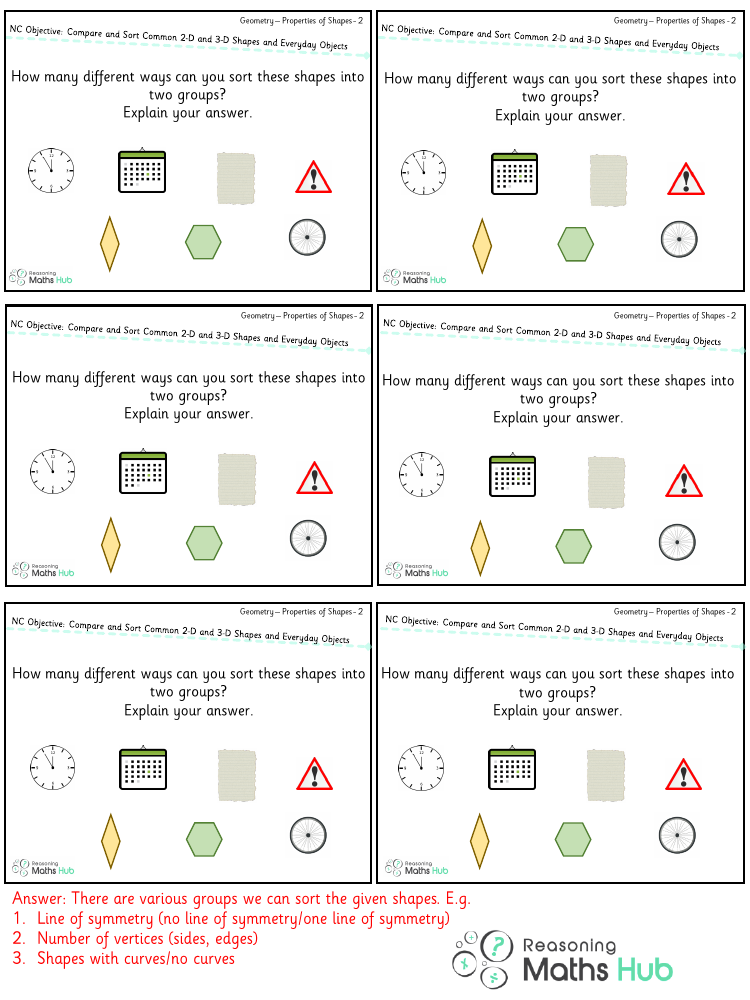Compare and sort common 2-D and 3-D shapes and everyday objects - Reasoning

Maths Resource Description
In a mathematics lesson focused on geometry, students are encouraged to explore and understand the properties of both two-dimensional (2-D) and three-dimensional (3-D) shapes, as well as their presence in everyday objects. The lesson's objective is to enable students to compare the characteristics of various shapes, such as the number of sides, vertices, and faces, as well as to sort them based on these attributes. For 2-D shapes, this might involve looking at circles, squares, rectangles, and triangles, identifying their similarities and differences, such as the fact that they all lie flat on a surface but vary in terms of edges and points.
When it comes to 3-D shapes, students will investigate cubes, spheres, cylinders, and pyramids, among others, to discern their unique features. They will learn to sort these shapes by considering aspects like the number of faces, edges, and vertices each shape possesses. Everyday objects provide a practical context for this exploration, as students can relate the abstract concepts of geometric shapes to tangible items they encounter in their daily lives. The reasoning aspect of the lesson challenges students to justify their sorting criteria and explain the rationale behind their comparisons, thus deepening their understanding of geometric concepts and enhancing their critical thinking skills.
